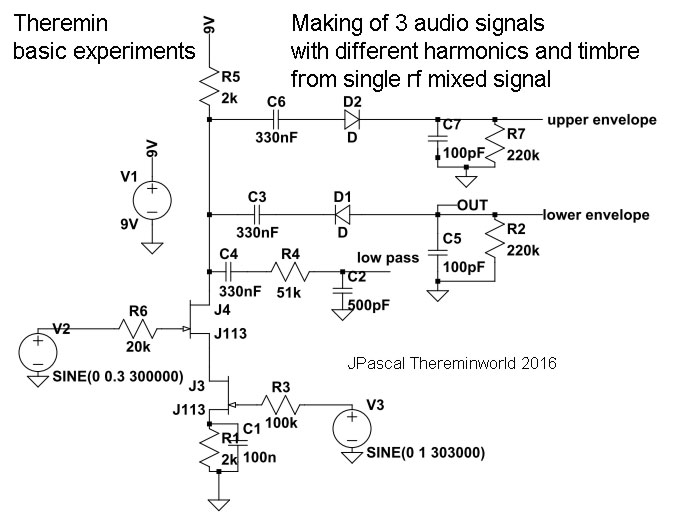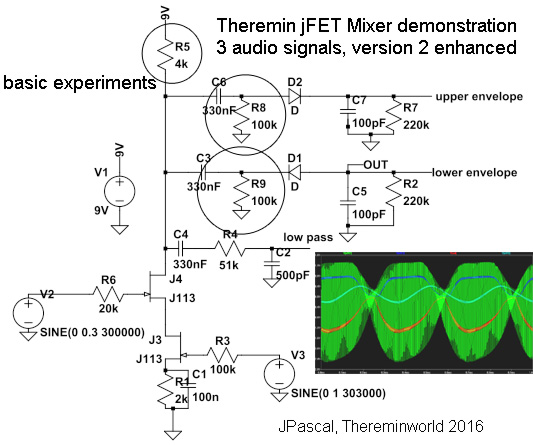JPascal, a diode and capacitor in series without anything connected to the intersection is almost guaranteed not to do what you want it to do. The capacitor will charge up and eventually no significant current will flow.
Take the upper path: R5, C6, D2, C7, R7. The RC time constant here is dominated by C6 and R7, and 300nF * 220k = 0.726s, so your simulation would have to run for a significant fraction of a second before you see the effect. I believe your sim is only running for 1ms?
The LTSpice directive I might use here is:
.TRAN 0 500m 499m
This lets the sim run for 500ms but only starts recording data to display 1ms before the end. To see the charging in action just remove the 499m from the end of the directive.
It also helps to reduce huge capacitor values somewhat so you don't waste so much of your own time letting them charge up in simulation. You can also set initial voltages for capacitors and inductors in Spice.
You should also define your diodes as 1n914 or similar rather than rely on the default.



